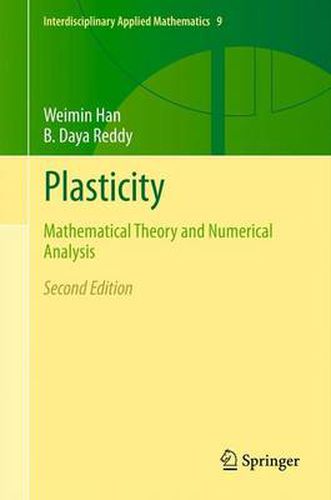Readings Newsletter
Become a Readings Member to make your shopping experience even easier.
Sign in or sign up for free!
You’re not far away from qualifying for FREE standard shipping within Australia
You’ve qualified for FREE standard shipping within Australia
The cart is loading…






This title is printed to order. This book may have been self-published. If so, we cannot guarantee the quality of the content. In the main most books will have gone through the editing process however some may not. We therefore suggest that you be aware of this before ordering this book. If in doubt check either the author or publisher’s details as we are unable to accept any returns unless they are faulty. Please contact us if you have any questions.
This book focuses on the theoretical aspects of small strain theory of elastoplasticity with hardening assumptions. It provides a comprehensive and unified treatment of the mathematical theory and numerical analysis. It is divided into three parts, with the first part providing a detailed introduction to plasticity, the second part covering the mathematical analysis of the elasticity problem, and the third part devoted to error analysis of various semi-discrete and fully discrete approximations for variational formulations of the elastoplasticity. This revised and expanded edition includes material on single-crystal and strain-gradient plasticity. In addition, the entire book has been revised to make it more accessible to readers who are actively involved in computations but less so in numerical analysis.
Reviews of earlier edition:
The authors have written an excellent book which can be recommended for specialists in plasticity who wish to know more about the mathematical theory, as well as those with a background in the mathematical sciences who seek a self-contained account of the mechanics and mathematics of plasticity theory. (ZAMM, 2002)
In summary, the book represents an impressive comprehensive overview of the mathematical approach to the theory and numerics of plasticity. Scientists as well as lecturers and graduate students will find the book very useful as a reference for research or for preparing courses in this field. (Technische Mechanik) The book is professionally written and will be a useful reference to researchers and students interested in mathematical and numerical problems of plasticity. It represents a major contribution in the area of continuum mechanics and numerical analysis.
(Math Reviews)
$9.00 standard shipping within Australia
FREE standard shipping within Australia for orders over $100.00
Express & International shipping calculated at checkout
This title is printed to order. This book may have been self-published. If so, we cannot guarantee the quality of the content. In the main most books will have gone through the editing process however some may not. We therefore suggest that you be aware of this before ordering this book. If in doubt check either the author or publisher’s details as we are unable to accept any returns unless they are faulty. Please contact us if you have any questions.
This book focuses on the theoretical aspects of small strain theory of elastoplasticity with hardening assumptions. It provides a comprehensive and unified treatment of the mathematical theory and numerical analysis. It is divided into three parts, with the first part providing a detailed introduction to plasticity, the second part covering the mathematical analysis of the elasticity problem, and the third part devoted to error analysis of various semi-discrete and fully discrete approximations for variational formulations of the elastoplasticity. This revised and expanded edition includes material on single-crystal and strain-gradient plasticity. In addition, the entire book has been revised to make it more accessible to readers who are actively involved in computations but less so in numerical analysis.
Reviews of earlier edition:
The authors have written an excellent book which can be recommended for specialists in plasticity who wish to know more about the mathematical theory, as well as those with a background in the mathematical sciences who seek a self-contained account of the mechanics and mathematics of plasticity theory. (ZAMM, 2002)
In summary, the book represents an impressive comprehensive overview of the mathematical approach to the theory and numerics of plasticity. Scientists as well as lecturers and graduate students will find the book very useful as a reference for research or for preparing courses in this field. (Technische Mechanik) The book is professionally written and will be a useful reference to researchers and students interested in mathematical and numerical problems of plasticity. It represents a major contribution in the area of continuum mechanics and numerical analysis.
(Math Reviews)